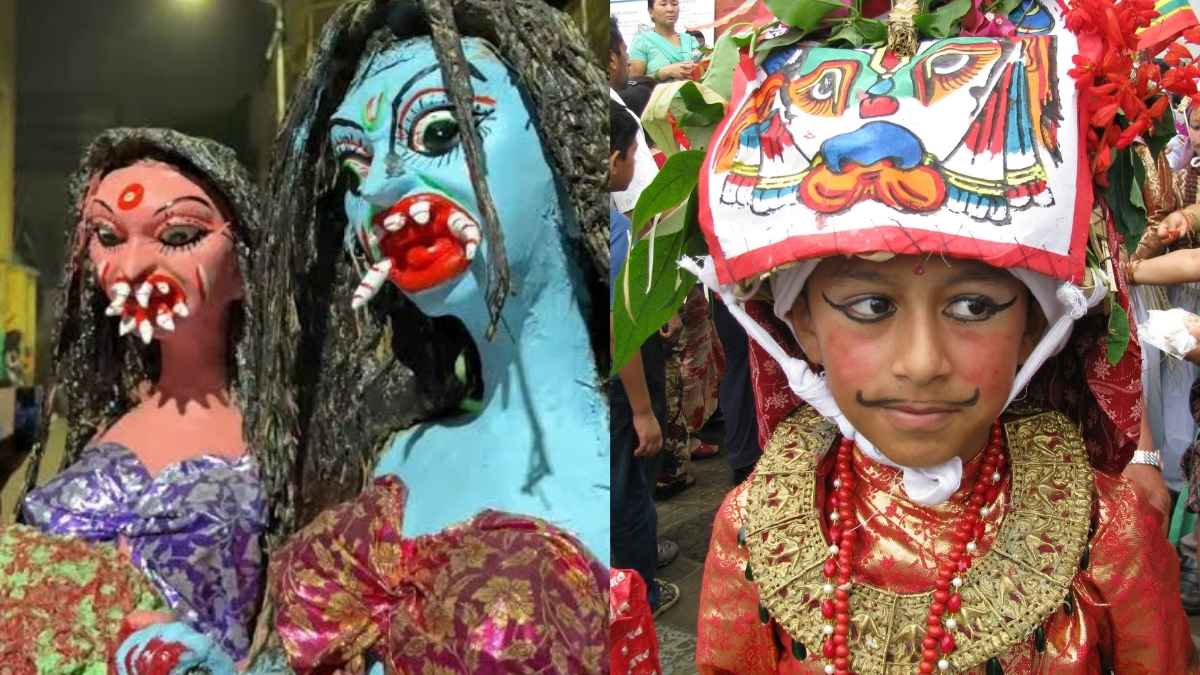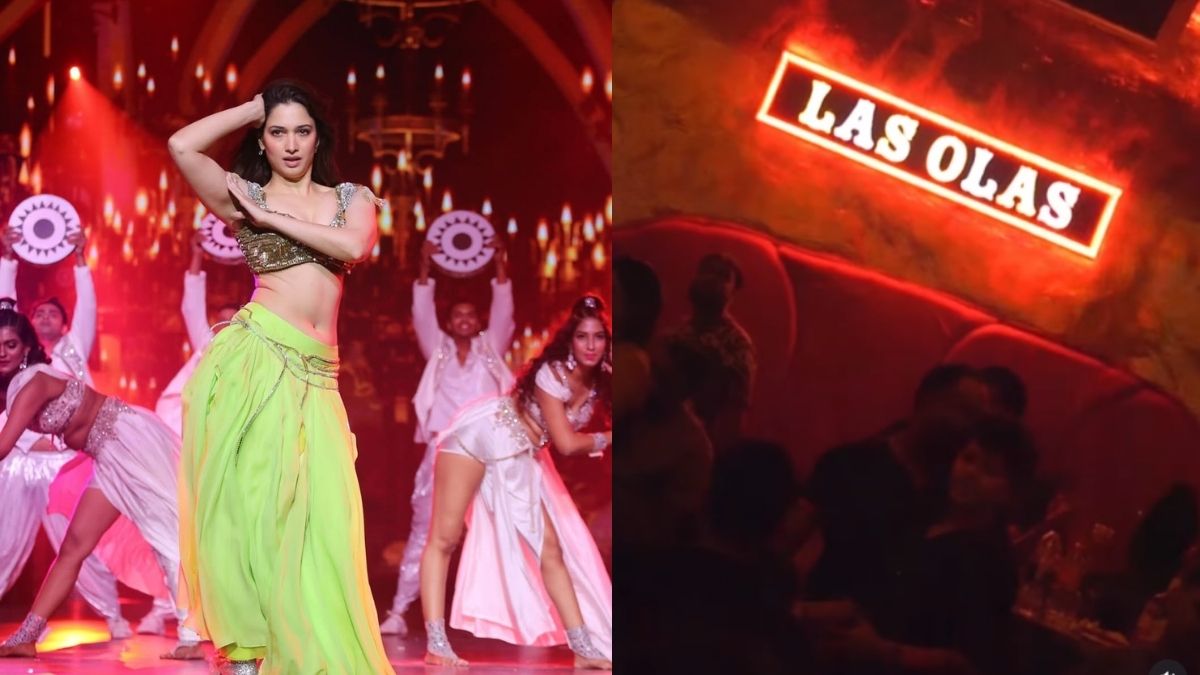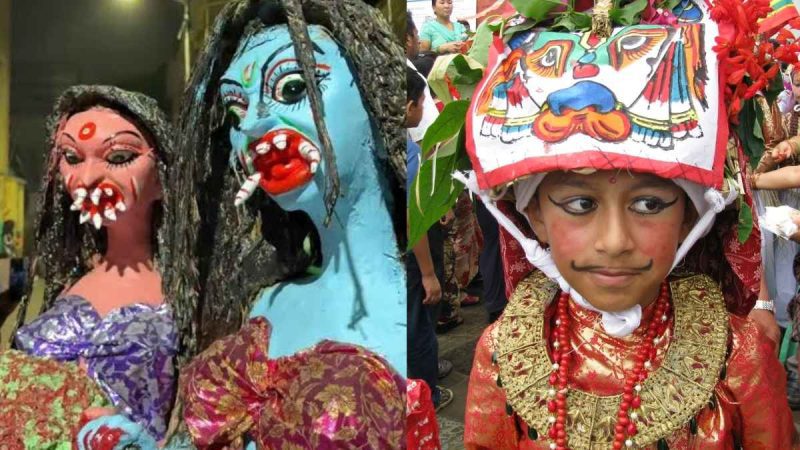Long before pumpkin faces and candy-stuffed costumes ruled global October, people in India had already mastered the art of flirting with Halloween. Around this time in India, the air smells of incense and fried puffed rice, and an old aunt’s whisper about “wandering spirits” carries a thrill that no modern horror movie can replicate.
7 Festivals Like Halloween In India
Far to the north, Pitru Paksha is less about celebration and more about intimacy. It is an ancestral conversation stretched over fourteen deliberate days. It is devotion worn like a second skin, memory rendered tactile, human, and very Indian. Down south, Kerala’s Theyyam refuses subtlety. Dancers rise like living statues, faces painted with colours that feel almost radioactive under the torchlight. The drums pound, insistent and primal, vibrating through ribs and hearts alike. Spectators lean forward, part terrified and part exhilarated, because somewhere in the commotion, you feel that myth has stopped being a story, it has arrived, in flesh and sweat and fire.
Here Is A List Of 7 Halloween-y Festivals In India
1. Bhoot Chaturdashi
In Bengal, the night before Kali Puja isn’t just another autumn evening, it’s Bhoot Chaturdashi. Fourteen flickering earthen lamps are placed like sentinels around the house, their glow meant to guide ancestral spirits home and keep trickier ones at bay. It shows no costume parades, no fake cobwebs, just that warm, trembling light carving out pockets of safety in the dark. Families eat choddo shaak, a medley of fourteen greens, believed to purify the body and fortify it against anything wicked that might be lurking unseen. And if you linger near a veranda in Kolkata that night, you might just catch the sound of ghost stories.
2. Pitru Paksha
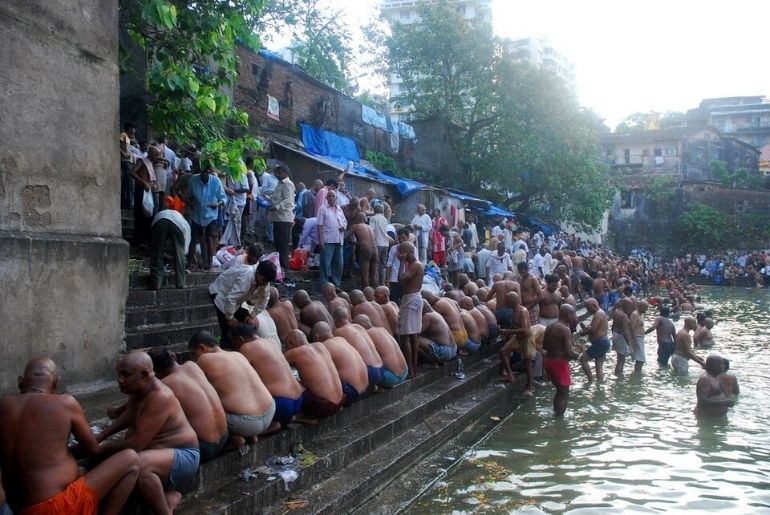
While Halloween globally is all costumes and candy now, in India, its bones are ancient, born from rituals honouring the dead. Pitru Paksha, a sixteen-day period in the Hindu calendar, carries that same bone-deep reverence. It’s said that during this time, ancestors return to visit the living, and families respond with offerings of food, water, and prayers. Rivers and ghats transform into places of quiet exchange between two realms. Kheer, rice, sesame seeds, and love become currency for peace. It isn’t spooky in the western sense, but there’s an unmistakable weight in the air, the kind that makes even a breeze feel like a presence.
3. Mahalaya
The new moon before Navratri has its own kind of magic. Mahalaya isn’t a festival of masks or mischief, but it carries a hush that feels otherworldly. Before dawn, the radio crackles to life with the familiar voice reciting “Mahishasura Mardini,” and suddenly the entire state seems to hold its breath. Mahalaya is the threshold; Goddess Durga begins her journey to earth, and ancestors are honoured at riverbanks with tarpan, their blessings invoked before the goddess’s arrival. If Halloween is about the night when the veil thins, Mahalaya is Bengal’s own version of that thinning.
4. Pang Lhabsol
Witness the vibrant Pang Lhabsol festival at Tsuglakhang Monastery, Gangtok, #Sikkim!
This unique celebration honors Mount Khangchendzonga, the guardian deity, & commemorates the historic blood-brotherhood treaty between Lepcha & Bhutia communities. pic.twitter.com/4blsAE5EgM— Abiema Lisham (@AbiemaLisham) September 17, 2025
Sikkim doesn’t whisper to its spirits; it dances with them. Pang Lhabsol is an explosion of colour, drums, and masked faces, all honouring Mount Kanchenjunga, the guardian deity. Monks and masked performers whirl through sacred spaces, their movements are both fierce and deliberate, summoning an energy that’s almost tangible. Here, spirits aren’t ghouls to be feared, they’re protectors to be celebrated. The festival doesn’t need fake blood or jump scares. Its power comes from the centuries-old belief that the mountain watches, listens, and guards.
5. Gai Jatra
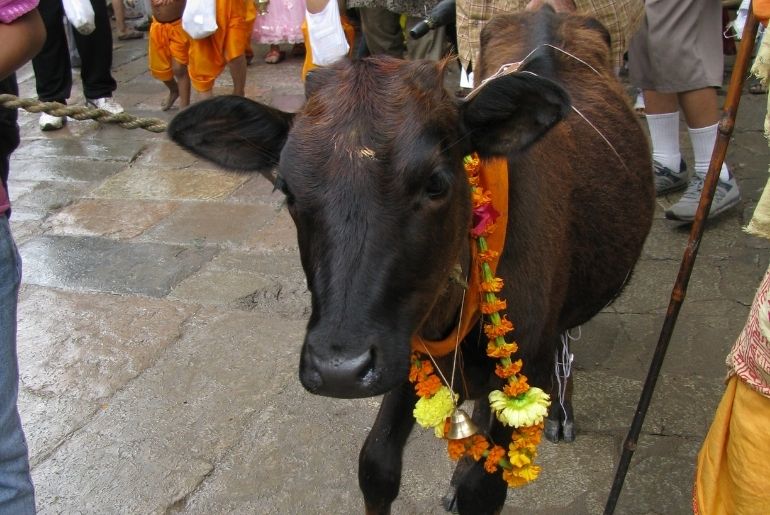
And then there’s Gai Jatra, the cow festival of Nepal, which spills softly across borders. It’s a day when loss walks beside laughter. Families who’ve lost loved ones in the past year send cows, or children dressed as cows, through the streets to guide souls safely onwards. But this isn’t a sombre march. It’s chaos, wit, theatre, and irreverence, all in one. Jesters poke fun at the powerful, parades roll on like moving plays, and death isn’t something to hide from. It’s acknowledged, embraced, and remarkably laughed at. It’s Halloween without the masks of terror.
Also Read: 8 Best Halloween Events In Dubai For A Frightfully Fun Night
6. Bada Badua Daka
Bada Badua Daka in Odisha is the kind of festival that makes you wonder if the shadows themselves are alive. Villagers cover themselves in masks that are part nightmare and folklore. Drums slam, voices chant, and offerings are laid carefully for spirits who are both feared and honoured. Children hide behind doors, peeking, and hearts racing. Elders lead processions through the village, and every step is a mix of reverence and thrill. It’s not about fun or costumes; it’s about touching the unknown, about community, belief, and a story that literally walks through the streets.
7. Bhoota Kola
Bhoota Kola in coastal Karnataka is a madness that has been refined by centuries of devotion. Night falls, and performers become vessels for spirits and local deities, their faces painted with vivid, sometimes terrifying designs. They whirl, stomp, and gesture, each movement charged with power, while drums and whistles shake the ground. The crowd don’t just watch, they react with laughter, gasps, and awe, caught between fear and fascination. Every ritual, every yell, and every glance carries meaning: protection, blessing, warning. Unlike a staged performance, Bhoota Kola lives; it’s raw, dangerous, and intoxicating. If Halloween had roots in belief rather than candy, this would be it.
These festivals echo the spirit of Halloween in India and are stubbornly alive. They resist being neat, Instagrammable snapshots. They are raw, intimate, and sometimes terrifying, yet never irrelevant. Halloween may play with masks, but India’s spirits are a language in themselves, spoken in flickering flames, drifting incense, pounding drums, and the small, trembling hands of children learning to honour what they cannot see. Here, fascination with the supernatural is neither casual nor performative; it is a lived, breathing conversation with the edges of existence.
Cover Image Courtesy: spakhrin/WikimediaCommons and thekolkatabuzz/Instagram
For more such snackable content, interesting discoveries and the latest updates on food, travel and experiences in your city, download the Curly Tales App. Download HERE. First Published: October 24, 2025 11:30 PM
